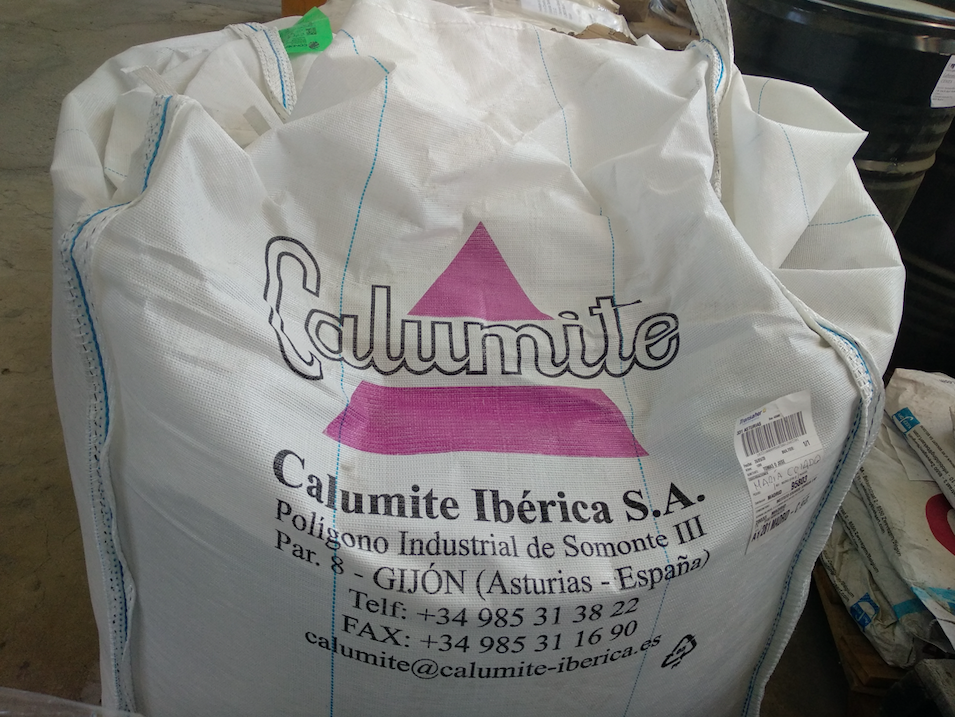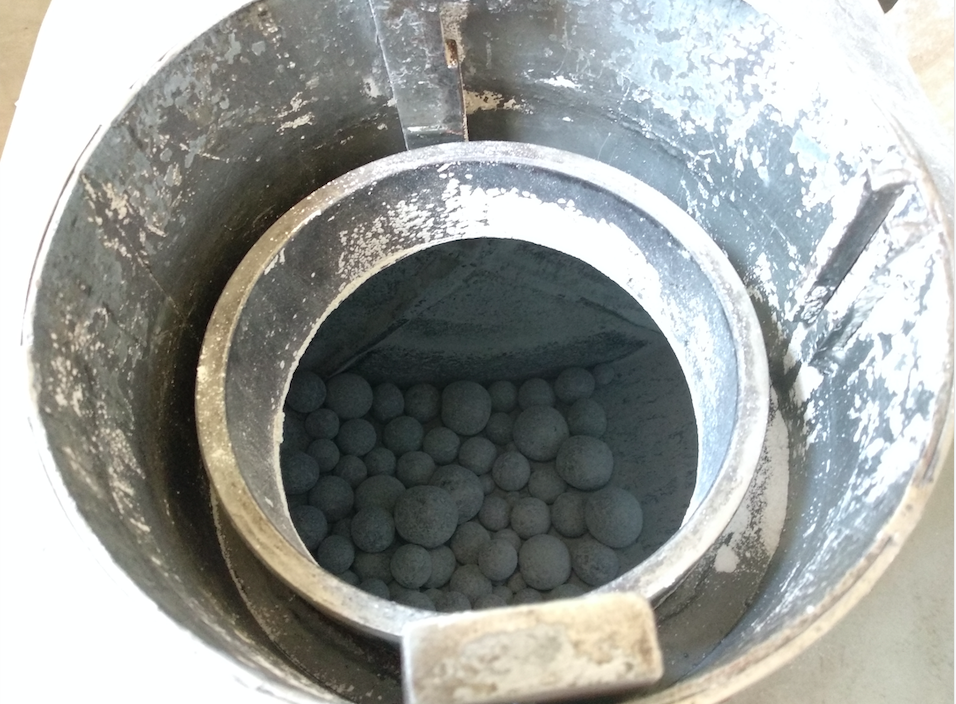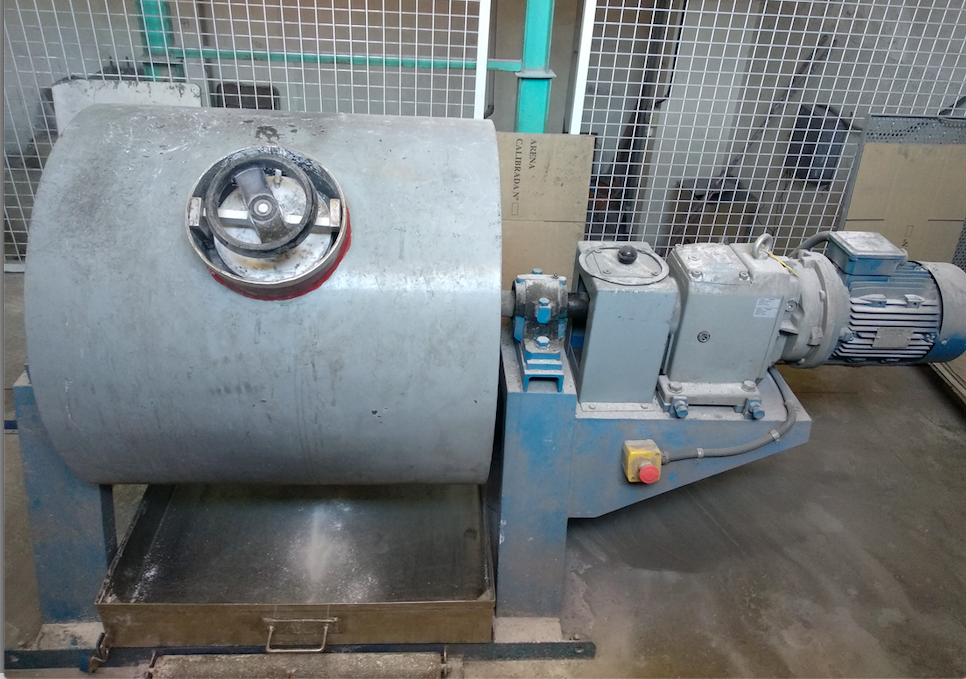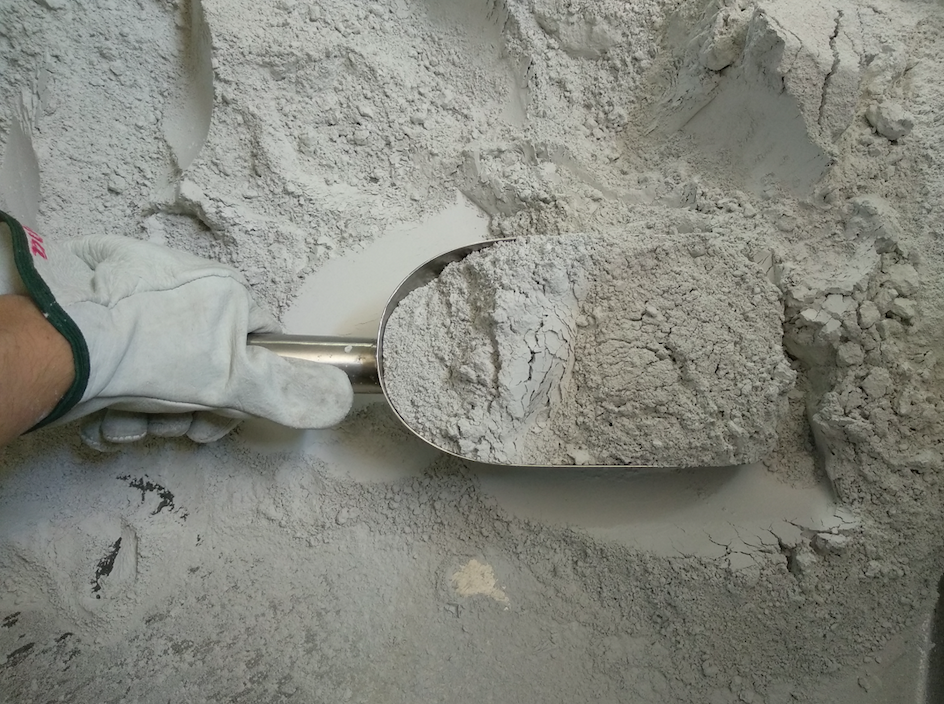Milling
Milling is the process by which the particle diameter of the material that will be the basis of the cement is decreased. This process is essential given that the effective particle surface area of the slag, that is, its size, is linked to its reactivity, so that the more active slags have smaller particle diameters and their useful contact surface is greater.
IRINEMA carries out the milling process at the IETcc facilities.
Waste / Raw material
As raw material for the cementitious material, a waste from the steel industry will be used, blast furnace slag, which is a latent hydraulic material that contains calcium, silicon, aluminum and magnesium oxides as its main elements.
Inside a steel factory, the blast furnace is the base installation for obtaining pig iron, which constitutes the raw material for the manufacture of steel. In the process of obtaining pig iron, slag is produced as waste and it is separated from it, thanks to the difference in density between the two substances. IRINEMA uses granulated vitrified blast furnace slag, which is obtained by the sudden cooling of the liquid slag coming out of the furnace. This process is called granulation because the slag is dispersed into small alveolar particles with sharp edges, obtaining a product similar to sand. The granulation process vitrifies the slag, turning it into a solid whose ion groups are arranged in an irregular way, amorphous material, giving high reactivity. In its external appearance this is manifested by the angularity and friability of the particle surfaces.
This material is supplied commercially with a grain size that is too large for IRINEMA’s purpose and therefore needs to be reduced through the milling process.


The mill
The milling process consists of introducing the raw material in a mechanical ball mill for a sufficient time and at an adequate speed to achieve the desired grain fineness. The ball mill consists of a horizontal, rotating steel drum that contains a large load of steel balls of different sizes.



Slag after milling: fineness of milling
After the milling process, the slag obtained has the appropriate grain diameter for IRINEMA’s needs.
The fineness of the milling is a crucial factor in the hydraulic value of the cement, since it directly influences the kinetics of the setting and hardening reactions.
This is due to the fact that the hydration of the grains of the material occurs only up to a certain depth from its surface, so that if the grain size is too large, its interior will remain practically inert, with very low reaction performance. Conversely, excessive fineness will produce higher emissions of heat from setting and shrinkage processes. Therefore, a compromise is reached between the increase in mechanical resistance with the fineness and the decrease in the durability of the material.
Acknowledgments
This stage of the project would not have been possible without the generosity of Ángel Palomo Sánchez, who has made his mill available to IRINEMA, and Francisco Carlos Morales Barranco, whose help has been crucial in carrying out the process.